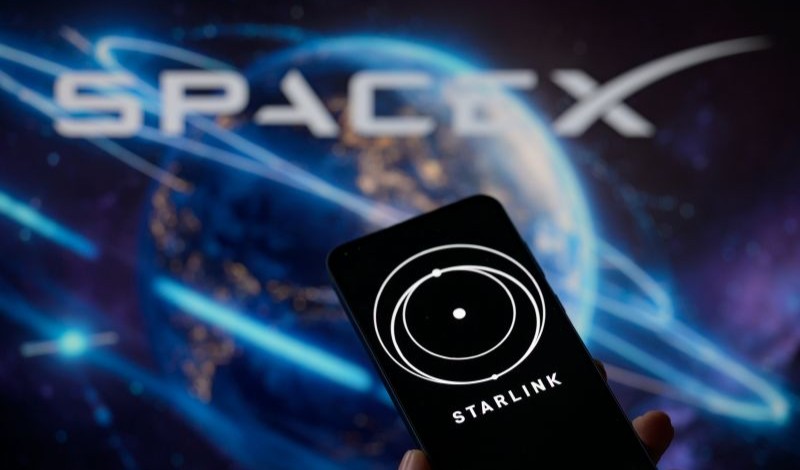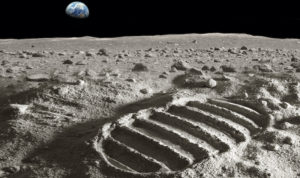
Scholars address methods to ensure the long-term sustainability of low-Earth orbit.
The United Nations Office for Outer Space Affairs (UNOOSA) recognizes that Earth’s orbital space is a limited resource, especially low-Earth orbit where most operating satellites reside. UNOOSA states that low-Earth Orbit is in danger of becoming overexploited as countries launch more satellites into orbit unless the deorbiting of satellites is properly managed.
The chance of satellites colliding with each other or pieces of debris increases with every additional satellite placed in low-Earth orbit. As these collisions occur, the satellites break apart into more pieces of debris, which creates a cascading effect of collisions known as Kessler Syndrome. Scholars fear that the self-propagating debris field will result in losing access to outer space and potentially destroy all satellites in low-Earth orbit.
Several satellite companies—including SpaceX, Project Kuiper, OneWeb, Telesat, and Guowang—are designing “mega-constellations” of satellite networks that would each have anywhere from 10,000 to 50,000 satellites placed in low-Earth orbit. Because of these planned mega-constellations, scholars are more concerned than ever about Kessler Syndrome.
In an article, David B. Spencer of Pennsylvania State College of Engineering and several coauthors sought to determine whether compliance with current orbital debris mitigation rules is enough to prevent Kessler Syndrome.
The Spencer team outlines the current space debris mitigation guidelines as defining the critical orbital zone of low-Earth orbit as all orbits below 2,000 kilometers, limiting objects released during normal operations, setting the deorbit requirement at 25 years after the end of a satellite’s mission, preventing orbital explosions, setting the principle of collision avoidance, and creating mitigation plans for each project that will be placed in orbit.
The Interagency Space Debris Coordination Committee (IADC), an international organization coordinating research on space debris mitigation, created these guidelines in 2002, and the United Nations Committee on the Peaceful Uses of Outer Space adopted them, with the exception of the 25-year deorbit rule, in 2007. Spencer and his coauthors explain that although the IADC guidelines are not legally binding, several countries and space programs have independently adopted them or have modeled their own guidelines on them.
Despite many countries having post-mission disposal requirements to deorbit satellites, the Spencer team found that only 50 percent of satellites are successfully deorbited when required. They explain that post-mission disposal can be costly as the controlling organization needs the technology to propel the satellite back down to Earth and there are no enforcement mechanisms for when countries or companies fail to deorbit their satellites in a timely manner. Spencer and his coauthors contend that the high cost of compliance, coupled with almost no cost for noncompliance, explains why so few satellites are properly deorbited.
On the other hand, collision avoidance processes are very common among current satellites, notes the Spencer team. They argue this is because a single collision can destroy a satellite, so companies and countries invest in relatively low-cost collision avoidance technology to protect their expensive investments.
Spencer and his coauthors explain that the economic value of orbital slots and the high cost of satellites are resulting in improved debris mitigation standards for the planned mega-constellations. Several of the companies launching mega-constellations state their goal is to deorbit all satellites with a success rate of 95 percent within three years of the satellite going offline, notes the Spencer team. They argue, however, that relying on self-imposed standards is unrealistic because there are no consequences for deviating from them, and voluntary adherence relies on good behavior and transparency, which are lacking from competitive commercial markets and missions relating to national security.
In light of these concerns, the Spencer team makes several recommendations to promote the long-term sustainability of low-Earth orbit.
Spencer and his coauthors argue that the first step in this process is to harmonize regulations and guidelines across as many jurisdictions as possible to prevent spacefarers from abusing regulatory shopping to avoid necessary safety features. They recommend that all spacefaring nations adopt the current IADC guidelines, as well as universal minimum technical requirements and a mandated registration process helmed by a single unbiased organization such as UNOOSA.
The Spencer team suggests that the best way to enforce these guidelines is by turning states with satellite launching capabilities into gatekeepers. They contend that launch states could prevent customers from launching unless their satellites comply with the international guidelines. Spencer and his coauthors state that these gatekeeping guidelines could also include requirements for sharing non-confidential information and for post-mission disposal plans.
Spencer and his coauthors conclude that converging international norms into a unified set of standards combined with gatekeeping access to launching satellites is the best way to ensure the long-term sustainability of low-Earth orbit.



